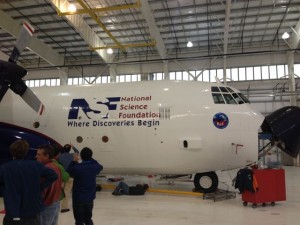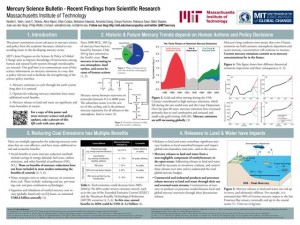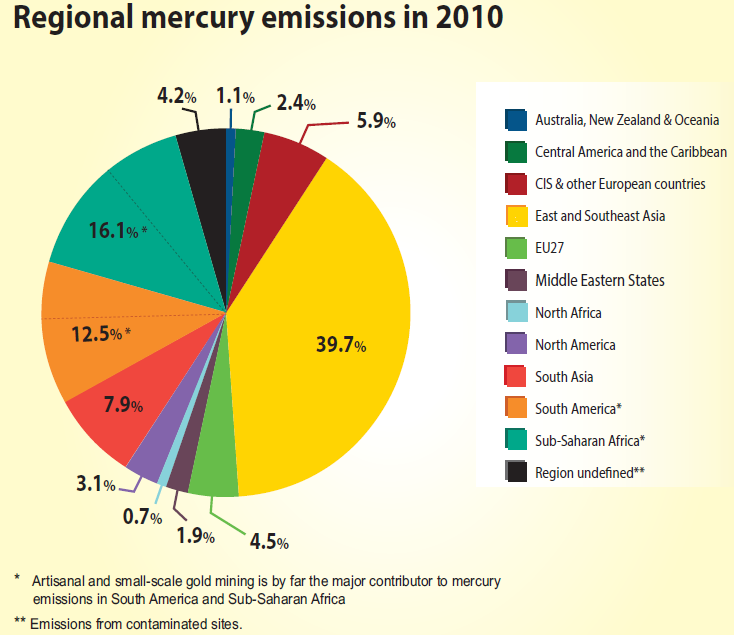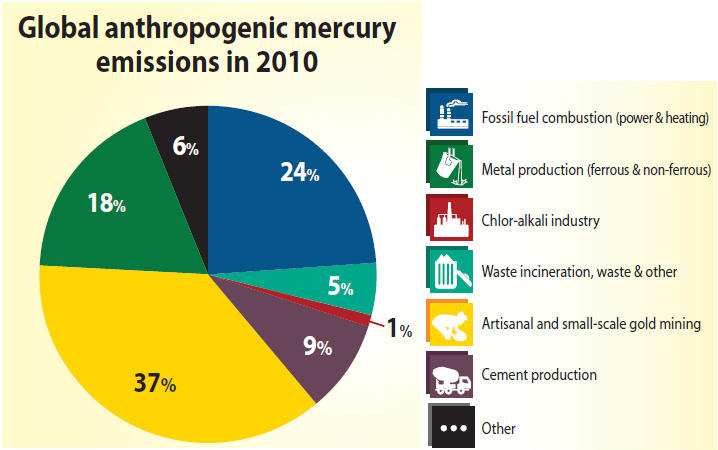by Helen Amos
Written by Helen Amos from Harvard University, this is the first of our Guest Scientist Blogs. Helen is a fourth year PhD candidate in the Earth and Planetary Sciences Department at Harvard. Her research focuses on understanding the biogeochemical cycling and environmental fate of mercury and other toxics. She is currently using state-of-the-science models to get a handle on the impact of past historical releases of anthropogenic mercury on present-day and future levels of mercury in the environment. Email: amos@fas.harvard.edu Website: http://people.fas.harvard.edu/~amos
When you go out and measure mercury in the environment today, how much of that mercury occurs naturally and how much is the result of anthropogenic (i.e., man-made) releases? This is a critical question with an uncertain answer. Much of the uncertainty stems from not considering the impact of anthropogenic mercury released in the past.
Human activities (e.g., mining) have been releasing mercury to the environment since antiquity (Nriagu, 1994; Cooke et al., 2009; Streets et al., 2011). The result of several millennia of anthropogenic mercury releases is mercury enrichment in the atmosphere, ocean, and soil.
Mercury continuously cycles between the atmosphere, ocean, and soil. Mercury emitted to the atmosphere (e.g., from a coal fired power plant) is eventually deposited to ocean or soil where it may be sequestered or may be re-emitted back to the atmosphere. This creates a “legacy” of mercury in the environment such that much of the mercury today originates from historical anthropogenic releases in the past.
It is all too common that mercury emitted from the ocean and soil is simply referred to as “natural mercury emissions”. However, not all of the mercury currently being emitted from the ocean and soil is truly “natural”. Rather, some fraction is naturally occurring and the remainder is anthropogenic mercury that was once deposited and is now being re-released to the atmosphere.
New work (Amos et al., 2013) suggests that a large fraction of mercury present in the environment today is a legacy of historical anthropogenic mercury emissions. Globally, more than half of the mercury in the ocean today is of anthropogenic origin (Amos et al., 2013). And more than half of the mercury emitted to the atmospheric today is legacy anthropogenic mercury (Amos et al., 2013).
How we define “natural” versus “anthropogenic” mercury has direct relevance to the UNEP mercury treaty. If policymakers want to regulate mercury or set targets for reductions, we need to know what the natural background levels of mercury in the environment actually are. If mercury emissions are incorrectly labeled as natural emissions, the impact of anthropogenic releases is underestimated and our ability to reduce or stabilize mercury concentrations in the environment is overestimated. Decision-makers need to keep this science in mind as they prepare a global mercury policy.
References:
Amos, H. M. et al. (2013), Legacy impacts of all-time anthropogenic emissions on the global mercury cycle, Glob. Biogeochem. Cycles, in review.
Cooke, C. A., et al. (2009), Over three millennia of mercury pollution in the Peruvian Andes, Proc. Natl. Acad. Sci. U. S. A., 106(22), 8830-8834.
Nriagu, J. O. (1994), Mercury pollution from the past mining of gold and silver in the Americas, Sci. Total Environ., 149(3), 167-181.
Streets, D. G., et al. (2011), All-time releases of mercury to the atmosphere from human activities, Environ. Sci. Technol., 45(24), 10485-10491.





